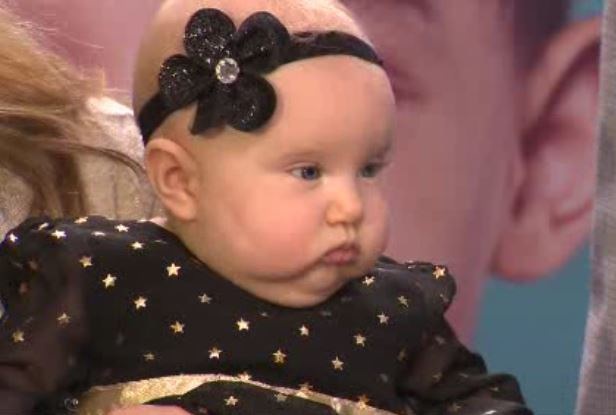A baby who doctors thought was terminally ill is making a miraculous recovery thanks to an unusual piece of technology.
CNN reports the story of baby Teegan Lexcen who was born with only one lung and half a heart. As doctors puzzled about how save the baby girl’s life, one physician grabbed a pair of 3D cardboard glasses and used them to find a way to treat her, the report states.
Cassidy and Chad Lexcen welcomed Teegan and her twin sister, Riley, into the world in August, but they did not expect Teegan to live long. The Minnesota couple’s doctors said there was no treatment for Teegan’s rare condition, and sent the family home with a hospice nurse and medication to ease their baby’s pain, the report states.
After two months went by, and Teegan was still alive, the Lexcens decided to seek another opinion. They found hope at a Miami, Florida hospital.
The report continues:
Three times a week, 30 cardiac doctors and nurses sit in a room at Nicklaus Children’s Hospital and discuss the treatment road maps for their patients and for children who might become their patients.
On a Wednesday morning in November, they looked at pictures of Teegan’s heart.
Like the doctors in Minnesota, the doctors in Miami had never seen a child who was missing a lung and nearly half a heart. They threw out ideas about possible surgeries to help her. No one had a definitive plan. Some were skeptical that they could do anything.
[Chief of cardiovascular surgery Dr. Redmond] Burke asked Dr. Juan Carlos Muniz, a pediatric cardiologist who specializes in imaging, to make a 3-D model of Teegan’s heart. It had helped in complicated cases before.
Click here to sign up for pro-life news alerts from LifeNews.com
A few hours later, Muniz reported bad news: Their 3-D printer was broken. “Technology always goes on the fritz at the worst possible time,” he lamented.
But it turned out to be the best possible time, because it forced Muniz to come up with an option that worked better.
He’d been chatting with Dr. David Ezon, a pediatric cardiologist at the University of Pittsburgh Medical Center, about using virtual reality — mainly used for playing video games — for children’s hearts.
After that discussion, Muniz bought a Google Cardboard device and had been playing with it in his office. With the broken printer, now was the time to use it for real, he decided.
Using an app called Sketchfab, Muniz downloaded images of Teegan’s heart onto his iPhone and showed them to Burke.
They were similar, yet different from 3-D images they’d been using on computer screens. With the goggles, it was possible to move around and see the heart from every angle — to almost be inside the heart checking out its structure.
Burke looked through the Google Cardboard, and visualized what he could do to fix Teegan’s heart.
The Google Cardboard is a cheap contraption that works with a smartphone app to see images in 3D.
It worked in helping to treat Teegan. Burke said the image from the cardboard device helped him to map out the precise steps he would take to correct Teegan’s heart condition. He said there were no surprises on the operating table.
“Sometimes that’s what makes the difference between life and death,” Burke said.
The innovative surgery was successful, thanks in part to the cardboard device, and doctors expect that Teegan will make a full recovery, according to the report. Burke and his team performed the surgery four weeks ago, and they expect Teegan will be able to go home in two weeks, the report states.
“It was mind-blowing,” says Cassidy Lexcen, the baby’s mother. “To see this little cardboard box and a phone, and to think this is what saved our daughter’s life.”








